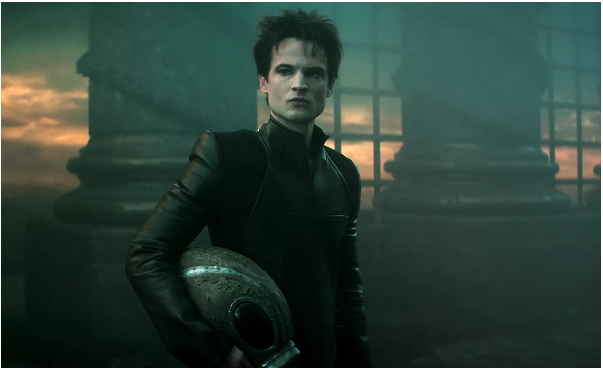TV
Unveiling the Final Season of The Sandman: Destruction, Puck, and the Endgame
1. Reclaiming the Narrative: Dream’s Internal Struggle
At the heart of The Sandman’s second season lies Dream’s internal struggle — his need to reclaim the narrative of his own life. Season 1 set the stage for Dream’s epic journey of self-reclamation. Having retrieved his artifacts and restored his kingdom, Dream believed that the worst was behind him. However, the new season turns that belief upside down. Heinberg notes that much of the season’s narrative focuses on how Dream confronts his past mistakes and the reality of how others perceive him.
Dream, who once viewed himself as the hero of his own story, finds himself facing uncomfortable truths. In Season 2, he realizes that he’s often the villain in the stories of others. From his destructive relationship with Nada to his complex connection with Lyta and his son Orpheus, Dream must reckon with the consequences of his choices. Heinberg emphasizes that this realization will “rock” Dream, shaking his sense of identity. It is a fascinating examination of what it means to be both the protagonist and the antagonist in one’s own life, and it’s a pivotal moment for the character’s arc.
Dream’s confrontation with his past transgressions doesn’t just impact him emotionally; it challenges his entire worldview. As the show delves deeper into his personal history, viewers will witness the emotional weight of his actions. His sense of invulnerability begins to crack, forcing Dream to question everything he thought he knew about himself. This thematic focus on self-reflection and growth mirrors the struggles many individuals face when confronting their mistakes and the harm they’ve caused to others.

2. The Shadow of Neil Gaiman: Legacy and Controversy Surrounding The Sandman
While The Sandman‘s journey on screen is undeniably compelling, the final season also arrives amid a storm of controversy surrounding its co-creator, Neil Gaiman. In January, it was revealed that The Sandman Season 2 would also be its last, leading to speculation that the decision was connected to the allegations of sexual misconduct against Gaiman. With several of Gaiman’s other projects facing delays or cancellation, many assumed that this was the driving factor behind The Sandman’s conclusion.
However, Heinberg was quick to clarify that the decision to make Season 2 the final season was not influenced by these events. In fact, Heinberg asserts that the decision was made three years ago, long before the allegations became public. He explains that the show had been planned with a clear narrative structure from the beginning, with a beginning, middle, and end already mapped out.
Despite the external controversy, Heinberg and the The Sandman team remained focused on bringing Gaiman’s vision to life. The decision to wrap up the series with Season 2 was part of a broader creative vision that was discussed long before any headlines emerged. Heinberg and his team were determined to ensure that the integrity of the show remained intact and that the narrative was given a proper and fitting conclusion. This behind-the-scenes clarity and purpose helped the team stay on track, even in the face of distractions and difficulties.
3. Adapting The Sandman’s Complex World: The Challenges of Bringing Dream’s Story to Life
Bringing The Sandman from the pages of the graphic novel to the screen was never going to be an easy task. The story spans 16 volumes, with Dream appearing in varying degrees of prominence. Heinberg, who helms the adaptation, quickly realized that while there is a wealth of material to pull from, Dream is not always the central character in every volume. Some books focus on other characters or themes, with Dream appearing in only a few scenes.
Given that Dream is often the protagonist in the overarching story, Heinberg and his team were faced with the challenge of keeping him at the center of the narrative. This required careful planning and creative adaptation. Heinberg points out that there are entire volumes where Dream only makes a brief appearance, so the writers had to figure out how to adapt those stories while maintaining Dream’s central role. As a result, Season 2 will blend various elements from across the comics, incorporating different protagonists and stories into Dream’s larger narrative.
This adaptation process was both a blessing and a curse. While it allowed the team to explore many aspects of The Sandman‘s expansive universe, it also meant that some iconic storylines, like A Game of You, had to be left out. Heinberg acknowledges that certain fan-favorite moments and stories couldn’t make it into the series, but he insists that the show still captures the essence of what made the comics so special. The show’s writers were able to incorporate aspects of various one-shot stories and weave them seamlessly into Dream’s larger arc. This balance between staying true to the source material and adapting it for television is one of the key strengths of the series.
4. Fresh Faces: The Characters of Puck and Destruction
One of the most anticipated aspects of Season 2 is the introduction of new characters, including Puck and Destruction. These characters, while not as central to the original comics, play important roles in the broader Sandman mythos. In an exclusive first look, EW revealed that Jack Gleeson, known for his role as Joffrey Baratheon in Game of Thrones, will be playing Puck. Gleeson brings a unique depth to the character, infusing him with mischief, sexiness, and a sense of psychological complexity that fans of the comics might not expect.
Heinberg describes Gleeson’s portrayal of Puck as a departure from the traditional depiction of the character. The mischievous and chaotic nature of Puck is still present, but Gleeson’s performance adds layers of heart and intelligence to the role. Puck becomes more than just a trickster — he becomes a deeply human character whose motivations are shaped by both his desires and his vulnerabilities.
Similarly, Barry Sloane takes on the role of Destruction, a character who has long been absent from the world of The Sandman but is crucial to the final season. Destruction, also known as “The Prodigal,” is a member of the Endless who abandoned his realm and his responsibilities. Despite his nature as the god of destruction, Destruction is a character defined by internal conflict. Heinberg notes that Destruction’s story is not one of pure devastation but rather of a soul torn between creation and destruction. This duality makes him a compelling character, and Sloane’s portrayal captures the tenderness and vulnerability that define Destruction’s personality.
5. The Endgame: Family Drama and the Conclusion of The Sandman’s Epic Tale
As the final season approaches, The Sandman brings its most profound themes to the forefront. Heinberg, who has been with the show since its inception, notes that the series is ultimately a family drama above all else. The relationships between the Endless — Dream, Death, Desire, Despair, and the others — have always been at the heart of the story. This final season will explore the complexities of these relationships, with each character facing their own personal reckoning.
The finale of The Sandman is not just about Dream’s journey but about the way the Endless confront their own flaws and come to terms with their responsibilities. Heinberg’s vision for the show centers on redemption and closure, with the final episodes offering a poignant and emotional conclusion to the saga. While the world of The Sandman is filled with gods and supernatural beings, at its core, it’s a story about family and the ties that bind. For Heinberg, the show’s end is a chance to wrap up these relationships in a satisfying and meaningful way.
As the second season unfolds, fans can expect a blend of heart-wrenching drama, whimsical fantasy, and profound insights into the nature of existence. This final chapter will leave an indelible mark on the world of The Sandman, offering a fitting end to one of the most beloved stories in modern fantasy.
From: Doublejoydesigns
